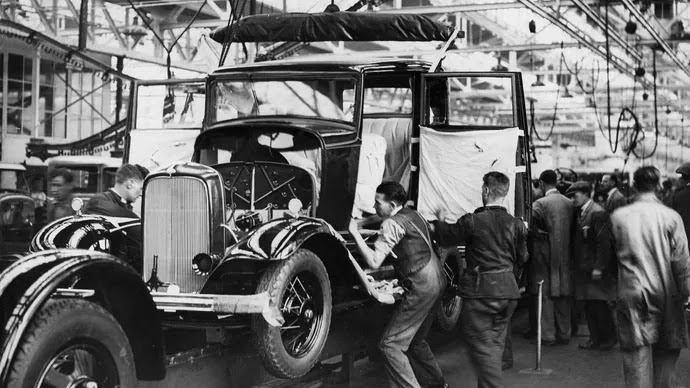Early history of Ford Model T and assembly line
Ford Motor Company, American car organization established in 1903 by Henry Ford and 11 partner financial backers. In 1919 the organization was reincorporated, with Ford, his significant other, Clara, and his child, Edsel, securing full possession; they, their main beneficiaries, and the Ford Foundation (framed 1936) were sole investors until January 1956, when public offer of the normal stock was first advertised. The organization makes traveler vehicles and trucks as well as car parts and extras. Base camp are in Dearborn, Michigan.

Early history: Model T and mechanical production system
Henry Ford fabricated his most memorable exploratory vehicle in a studio behind his home in Detroit in 1896. After development of the Ford Motor Company, the main Ford vehicle, the first Model A, was collected at the Mack Avenue plant in July 1903.

After five years, in 1908, the profoundly fruitful Model T was presented. Interest for this vehicle was perfect to the point that Ford grew new large scale manufacturing strategies to make it in adequate amounts. In 1911 he laid out the business’ most memorable U.S. branch gathering plant (in Kansas City, Missouri) and opened the organization’s most memorable abroad creation plant (in Manchester, England); in 1913 he presented the world’s most memorable moving sequential construction system for vehicles; and in 1914, to additionally further develop work efficiency, he presented the $5 day to day wage for an eight-hour day (trading $2.34 for a nine-hour day). Sequential construction system creation permitted the cost of the Model T passenger vehicle adaptation to be brought down from $850 in 1908 (identical to around year and a half compensation for a typical pay) to under $300 in 1925 (comparable to around 4 months pay for a typical pay).
The organization’s most memorable worldwide deals branch opened in Paris in 1908. By mid-1914 there were in excess of 500,000 Model Ts on the streets of the world, by 1923 the organization was delivering the greater part of America’s cars, and toward the finish of the 1920s Ford had in excess of 20 abroad gathering plants in Europe, Latin America, Canada, Asia, South Africa, and Australia. The Ford had turned into the world’s most natural make of vehicle, with 15 million Model Ts having been delivered. In 1927 the last Model T and the first new Model A were delivered, continued in 1932 by the principal Ford V-8. In 1922 Ford had procured the Lincoln Motor Company (established 1917), which would deliver Ford’s extravagance Lincolns and Continentals. In 1938 Ford presented the principal Mercury, a vehicle in the medium cost range among Ford and Lincoln.
